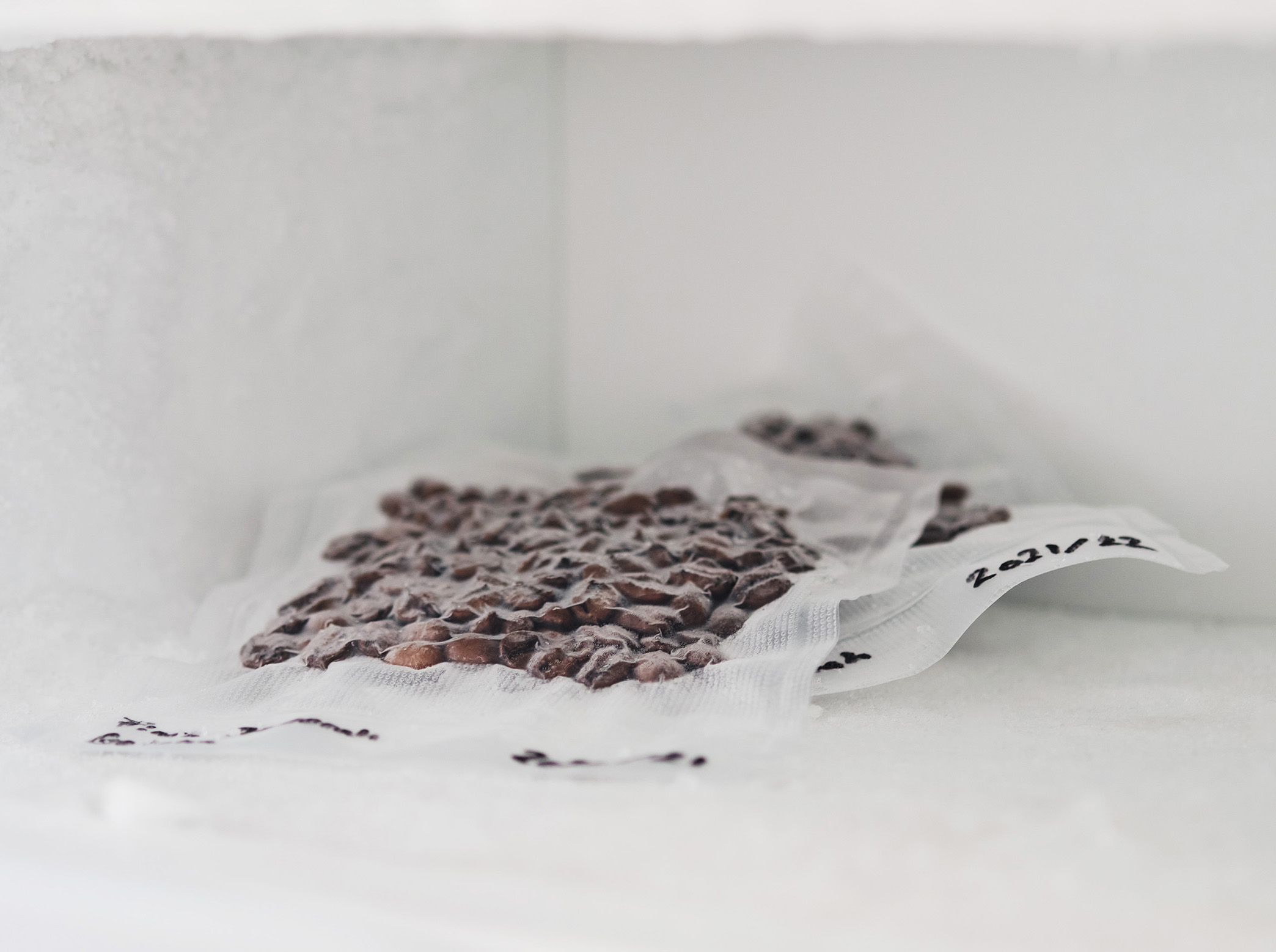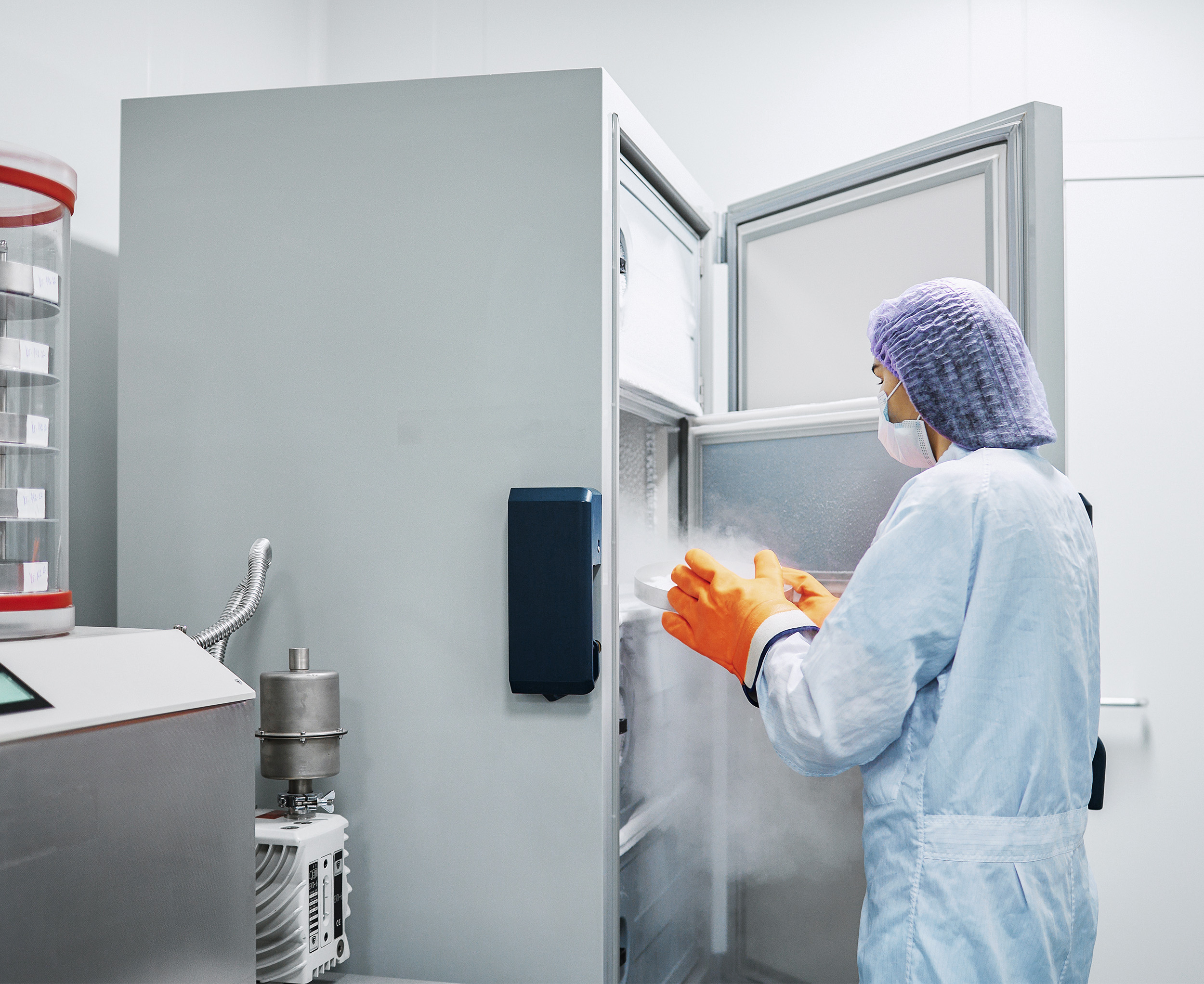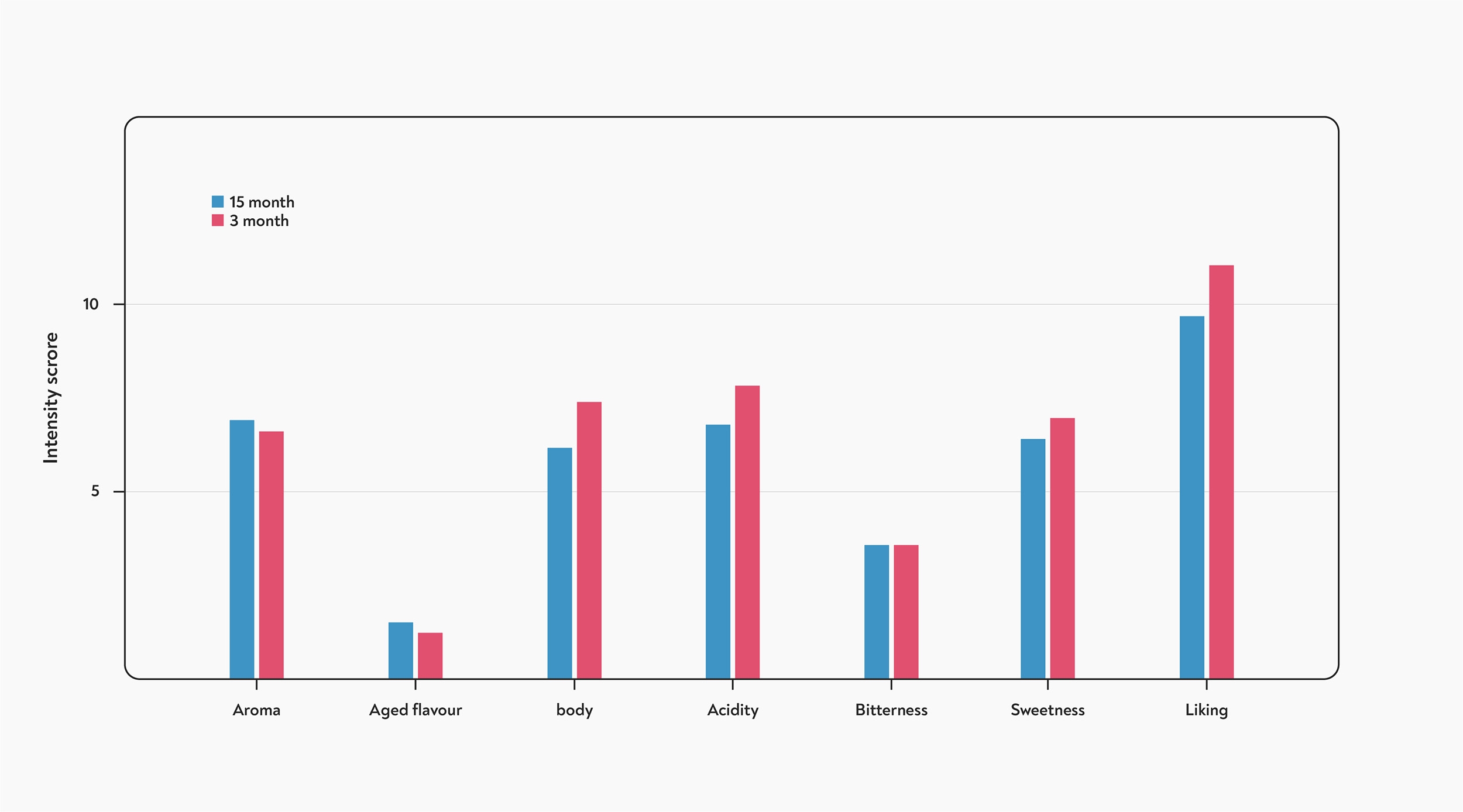Freezing coffee has been part of the specialty barista’s arsenal for some time now. Ever since we discovered the benefits of grinding coffee from frozen, we’ve been keen advocates of الفراغ-sealing small amounts of roasted coffee, so that you can keep that rare and expensive microlot on ice, and always have something ready for a special occasion.
What we don’t know, however, is exactly how long the beans can stay in the freezer. Let’s be honest: if we have something really special in there, it isn’t going to stay there for long, so we don’t often get the opportunity to find out.
Recently, though, we got the opportunity to taste two samples of frozen coffee, one year apart, thanks to our friend Lloyd Meadows, owner of Tortoise Espresso in Castlemaine. The good news is that the difference was pretty slight — freezing coffee for a year or more seems to do very little harm to the flavour. What we didn’t necessarily expect, however, is that we could reliably tell which coffee was the older one, getting the answer right nine times out of ten.
 Roasted coffee stays fresh for a long time if it’s frozen in الفراغ-sealed packs… but how long?
Roasted coffee stays fresh for a long time if it’s frozen in الفراغ-sealed packs… but how long?
In this post, we’ll share the results of our tasting with you, and explain why we’re going to keep freezing our beans — even if it can’t completely halt the ageing process.
Coffee Staling Research
There’s a little bit of published research already out there about keeping coffee in the freezer — a lot of it focused on storing ready-ground, commercial coffee. The difficulty with conducting this kind of research is that there isn’t a perfect way to compare old and fresh coffee.
You can either take the same coffee and taste it as it ages over time — with all the problems that come with that, such as the grinder burrs getting blunter, or the difficulty of making accurate comparisons as time goes by.
Alternatively, you can keep one sample in the deep freeze, and use that frozen sample as the reference that you compare all other coffees to. This is how most research on coffee staling is done — but of course, it doesn’t help us decide how long the coffee in the freezer stays fresh.
Even though frozen coffee is the ‘fresh’ standard by which all stale coffee is measured, we do know that it’s not a perfect storage method. In one study on coffee staling, researchers sealed coffee into laminate pouches, in a protective atmosphere with less than 1% oxygen, and kept it in the freezer. Despite all of these precautions, the coffee still lost volatile aroma compounds over the course of a year (Marin et al 2008).
 Frozen coffee is used in laboratory trials as the point of comparison for how effective different packaging is in keeping coffee fresh. Freezing beans is the best method we have to keep coffee fresh for long periods of time — but it’s not perfect.
Frozen coffee is used in laboratory trials as the point of comparison for how effective different packaging is in keeping coffee fresh. Freezing beans is the best method we have to keep coffee fresh for long periods of time — but it’s not perfect.
This echoes what happens in green coffee, as we found out in the lesson about coffee storage in our Roasting Science course. Good storage methods can slow the rate of fade and prevent green coffee from going rancid, but sealing the beans in protective atmospheres, or even freezing them, can’t completely prevent the gradual loss of aroma. Whether roasted or green, it seems all coffee must fade: we can’t stop the process, only slow it down.
The Tasting
For our tasting, we took a different approach. Instead of trying to taste exactly the same coffee over time, we had the opportunity to taste the same microlot from two different harvests, one year apart. While this means that the coffee samples are not exactly the same, it has one big advantage — we could taste the samples side by side.
We tasted two samples of the same Geisha microlot from Finca Deborah in Panama — the Enigma’ Opal profile CM natural. One sample from the 2020/21 harvest, and the other from 2021/22. Both were roasted by ONA Coffee, then الفراغ sealed and frozen 14 days after roasting. At the time of tasting, the newer lot had been in the freezer for 3 months, while the older sample had been frozen for 15 months.
The key to keep coffee in the freezer in good condition is effective الفراغ sealing
When we tasted them, we not only scored them on typical attributes like حموضة and sweetness, which could vary from harvest to harvest — we also asked our tasting panel to separately score the coffee for any signs of ageing in the flavour, and to guess which coffee was the older one of the two. In this way, we hoped to separate out any differences in flavour between the two harvests from the differences that result from spending a year in the freezer.
Our tasting panel consisted of four coffee professionals, including our Dean of Studies, Jem Challender, and one wine expert. The panel each compared two sets of pour-over brews for each coffee, for a total of ten pairs of simultaneous comparisons.
For each coffee they tasted, we asked them to score the aroma, body, حموضة, bitterness, and sweetness, as well as their overall liking of the coffee, and the presence of any flavours such as woody or oxidised notes that could indicate stale or aged coffee. The panel rated each attribute of the coffee on a 15 point كثافة scale, with 1 representing undetectable, and 15 representing an extremely high كثافة.
Signs of Ageing
The differences between the scores for the two coffees were fairly small, suggesting that there weren’t major differences in quality between the two harvests. The most significant differences were in the body and the overall liking of the two brews — in both cases, the panellists rated the fresher coffee more highly, but the differences were not quite statistically significant (p ≈ 0.07 for both, using 2-tailed t-tests).
Even after more than a year in the freezer, the older coffee still tasted exceptionally good. None of the cups showed much evidence of ageing, either — no panellist scored any coffee above a 2 for aged flavour — representing ‘barely detectable’ on our 15-point scale.
 An extra year in the freezer has little effect on coffee flavour. The chart shows the average scores (on a 15 point كثافة scale) over ten cups of the fresher (3 month) and older (15 month) frozen coffees, tasted in pairwise comparisons. None of the differences were statistically significant.
An extra year in the freezer has little effect on coffee flavour. The chart shows the average scores (on a 15 point كثافة scale) over ten cups of the fresher (3 month) and older (15 month) frozen coffees, tasted in pairwise comparisons. None of the differences were statistically significant.
One result was surprising, though. Even though the differences between the coffees were mostly quite minor, and there were barely any detectable aged flavours in either coffee, the panel were still able to correctly guess which coffee was older in nine out of ten cases.
Because the two coffees in our tasting were not identical, we can’t completely rule out the possibility that the difference between the two is due to some difference in the quality of the green or roasted coffee, rather than because of ageing. However, the fact that our متذوقي القهوة could not only taste a difference but could specifically identify which coffee was older, suggests that ageing did indeed play a part. This also tallies with the research we cited earlier, showing that the amount of volatile aromas in frozen coffee decreases over the course of a year (Marin et al 2008).
A Real-life Example
To get an idea of how freezing roasted coffee can work in practice, we spoke to Cameron Box, Production Manager at the Pablo and Rusty’s roastery. Pablo and Rusty’s offer a kind of tasting flight called ‘Expedition’ — a selection of high-end coffee beans, الفراغ-sealed in small portions. To be able to present these coffees at their best, they use the freezer both for the green coffee, and for the roasted beans.
When a new green coffee for Expedition arrives at the roastery, they freeze it in الفراغ packs, each containing enough for a single roast batch. The bags are then individually defrosted when needed for roasting. “Having them in pre-weighed lots means the roasters are only taking out what they need for the next roast,” Cameron explains.
After roasting, the beans go straight back into the freezer. “The roasted coffee from each batch gets الفراغ packed and frozen in 45g recyclable bags on the day of roasting,” Cameron says. “When an order is placed, we take the coffee out of the freezer and send it to the customer the same day.”
The freezer is key to making this product possible, Cameron says. “The green beans stay fresh, the roasted coffee stays fresh, the end product tastes delicious, and it allows us to offer our customers a wide range of high-end coffees that would otherwise not be viable.”
Most of the coffee for Expedition gets shipped within 3 months of roasting. Within that time, Cameron says, they are yet to detect any signs of ageing in the coffee. The program has been running for less than a year, however, so they don’t yet know the upper limit to how long their coffee lasts in the freezer.
While our results suggest that freezing coffee isn’t the perfect way to store coffee, it’s still the best one we have. It’s remarkable how well this delicate coffee kept its aroma after more than a year in the freezer. Sure — nothing will ever be as good as fresh green coffee, freshly roasted (but not too fresh), and the most memorable cups of coffee are ephemeral by nature. So if you’re wondering when to drink that special coffee you’ve been saving, go and drink it right now — you deserve it.
But after tasting these two beautiful Geishas side by side, we feel pretty confident in saying that freezing can keep coffee tasting good for at least a year, and probably longer. Perhaps this time next year, we’ll be able to come back and tell you if this lot from Finca Deborah still tastes amazing after 2 years in the deep freeze. We sure hope so.






I think it’s not good idea to freeze the roasted coffee in the day of roasting ! but Cameron says. “When an order is placed, we take the coffee out of the freezer and send it to the customer the same day.”
I remember that I read some books that they says you have to grind your coffee bean and make your coffee immediately after you take your bean out of freezer !
Hey aref8804, there are some benefits to grinding coffee beans when they are still frozen. This post unpacks that idea and summarises a great experiment headed up by Prof Chris Hendon that looked into that particular topic. https://www.baristahustle.com/blog/the-grinder-paper-explained/
hey good one
Great and factual text! As usual!
I have personally tested the freezing of roasted coffee beans and the difference is really very small. The beans stored by me the longest were 2 years old. When comparing the SCA form after cupping, freezing coffee ratings were slightly lower, but within the error limits. The most important thing is to brew the defrosted coffee immediately, because after opening the package, it loses freshness very quickly (faster than non-frozen coffee).
I have had similar findings and was also able to compare coffees from a harvest to another by freezing some of the previous harvests. While that gives a good overall indication regarding the effect of freezing on ageing, the green coffee itself is different from the harvest.
What I found was a more reliable test was to freeze green coffee, then roast some of it, age it, freeze it, then roast some more again, say 6 months later, age it, and compare the 2. This way you’re working with the exact same green and reduced the ageing of it by freezing it. My findings were however similar: Loss in aromatics, acidity and body intensity. Past the 2 year mark of freezing, some more pronounced woody aged notes were noticeable – as you mentioned, freezing slows down but does not perfectly stop ageing.
I have also found that freezing green was far more effective at keeping the freshness of coffee – have you conducted any experiments with it?